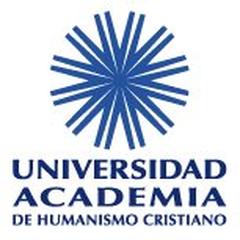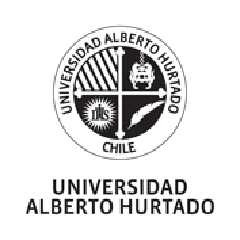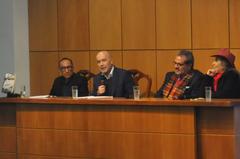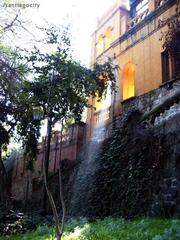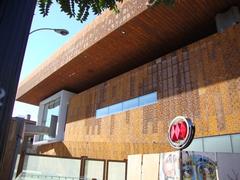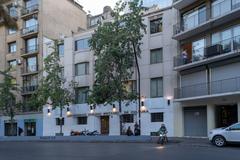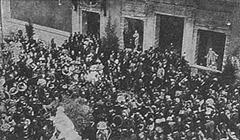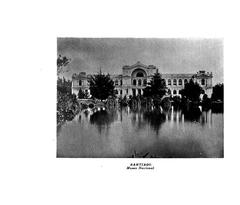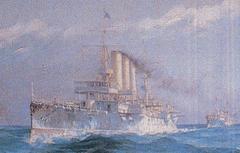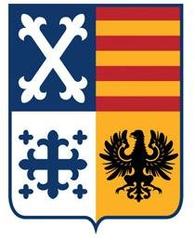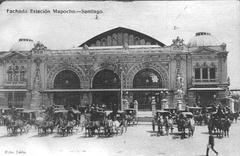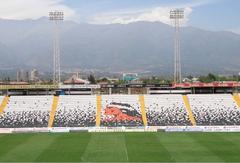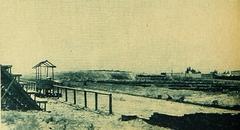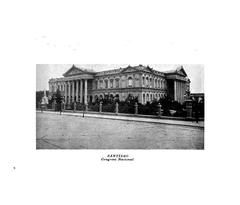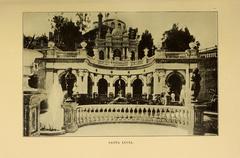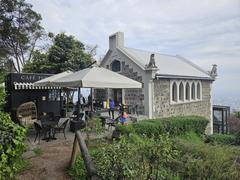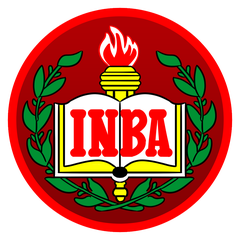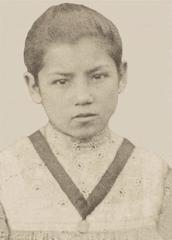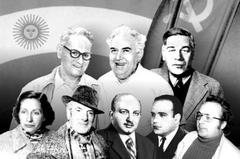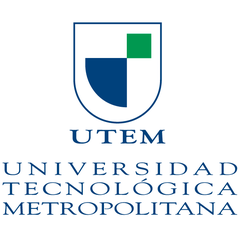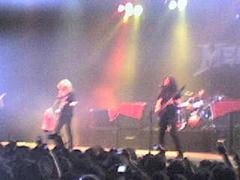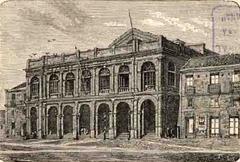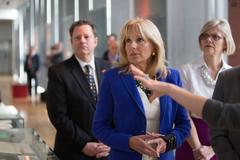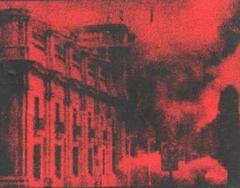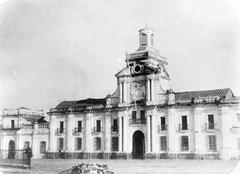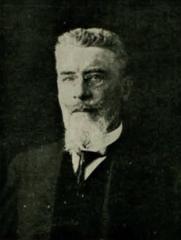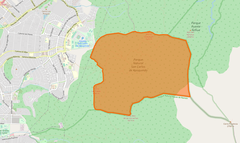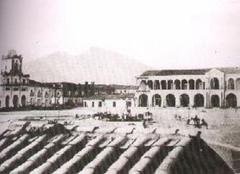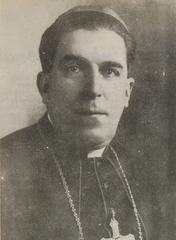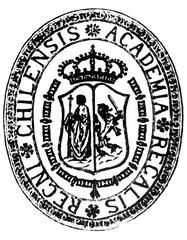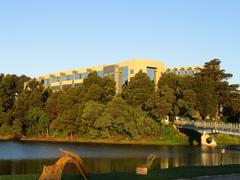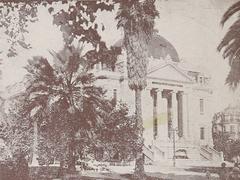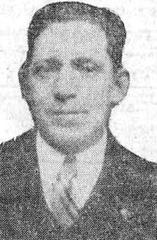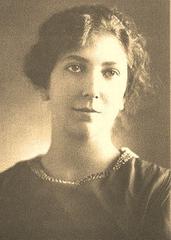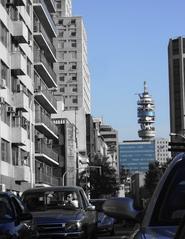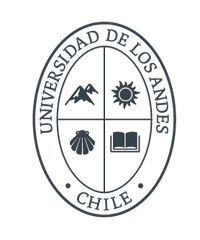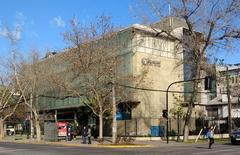Comprehensive Guide to Visiting Museo de la Merced, Santiago, Chile
Date: 19/07/2024
Introduction
The Museo de la Merced, nestled in the heart of Santiago, Chile, within the historic Basílica de la Merced, offers a profound glimpse into the rich tapestry of the Mercedarian Order’s history and Chile’s colonial heritage. Established in 1967, the museum serves as a custodian of an extensive collection of religious artifacts, colonial art, and historical documents that date back to the 16th century. The Mercedarian Order, formally known as the Order of the Blessed Virgin Mary of Mercy, arrived in Chile in 1535, bringing with it a legacy deeply intertwined with the nation’s colonial past (Museo de la Merced’s official website). The Basílica de la Merced, originally constructed in 1549 and rebuilt multiple times due to natural disasters, stands as a testament to Baroque and Neoclassical architectural styles, reflecting the artistic and cultural evolution of Santiago over centuries. This comprehensive guide aims to equip prospective visitors with essential information regarding the museum’s history, significant collections, visitor information, and travel tips to ensure an enriching and seamless experience.
Table of Contents
- Introduction
- Origins and Early History
- Architectural Evolution
- Establishment of the Museum
- Significant Collections
- Historical Documents and Manuscripts
- Restoration and Preservation Efforts
- Cultural and Educational Impact
- Recent Developments
- Visitor Information
- Visitor Tips
- FAQ
- Future Prospects
- Conclusion
- Sources
Origins and Early History
The origins of this site date back to the early colonial period. The Mercedarian Order, formally known as the Order of the Blessed Virgin Mary of Mercy, was established in 1218 in Barcelona, Spain. The order arrived in Chile in 1535, accompanying the Spanish conquistadors. The first church on the site was constructed in 1549, making it one of the oldest religious sites in Santiago.
Architectural Evolution
The original structure of the Basílica de la Merced underwent several reconstructions due to natural disasters. The most significant reconstruction occurred after the devastating earthquake of 1730, which led to the complete rebuilding of the church. The current structure, completed in 1760, showcases a blend of Baroque and Neoclassical architectural styles. The church’s façade, with its intricate carvings and statues, is a testament to the craftsmanship of the colonial period.
Establishment of the Museum
The Museo de la Merced was officially established in 1967. The museum was created to preserve and showcase the rich history and cultural heritage of the Mercedarian Order in Chile. It houses an extensive collection of religious artifacts, colonial art, and historical documents. The museum’s establishment was part of a broader effort to preserve Chile’s colonial heritage and promote cultural tourism.
Significant Collections
Historical Artifacts
The museum’s collections are divided into several categories, each highlighting different aspects of the Mercedarian Order’s history and influence in Chile. One of the most notable collections is the series of colonial paintings depicting scenes from the life of Saint Peter Nolasco, the founder of the Mercedarian Order. These paintings, created by renowned colonial artists, provide valuable insights into the religious and cultural life of colonial Chile.
Pre-Columbian Artifacts
The museum also boasts a rich collection of Pre-Columbian artifacts crucial for understanding the indigenous cultures that existed in Chile before the arrival of the Spanish. Among these, the ceramic pieces from the Diaguita culture stand out. These ceramics are characterized by their intricate geometric patterns and are considered some of the finest examples of Pre-Columbian art in the region.
Religious Art
Religious art forms a significant part of the museum’s collection, reflecting the deep-rooted Catholic traditions in Chile. The collection of religious paintings includes works from the colonial period to the 19th century. These paintings often depict scenes from the Bible, saints, and the Virgin Mary, notable for their detailed iconography and use of color.
Sculptures
The museum’s collection of sculptures includes both religious and secular pieces. The wooden sculptures of saints are particularly noteworthy. These life-sized sculptures were used in religious processions and are characterized by their realistic features and expressive faces, providing a fascinating insight into the religious practices and artistic traditions of colonial Chile.
Decorative Arts
The decorative arts collection at the Museo de la Merced includes a variety of objects such as furniture, silverware, and ceramics. These items are valuable not only for their aesthetic qualities but also for the insights they provide into the daily lives and social customs of different periods in Chilean history.
Historical Documents and Manuscripts
The museum also houses a vast collection of historical documents and manuscripts. These documents include letters, decrees, and records related to the Mercedarian Order’s activities in Chile. One of the most important documents in the collection is a letter from King Philip II of Spain, granting the Mercedarian Order the right to establish missions in Chile. This letter, dated 1555, is a crucial piece of historical evidence of the order’s early presence in the region.
Restoration and Preservation Efforts
Over the years, the Museo de la Merced has undergone several restoration and preservation efforts to maintain its collections and the historic building itself. In 2010, the museum was temporarily closed for extensive restoration work following the 8.8 magnitude earthquake that struck Chile. The restoration project, funded by both the Chilean government and international organizations, aimed to repair structural damage and restore the museum’s collections.
Cultural and Educational Impact
The Museo de la Merced plays a vital role in promoting cultural and historical education in Chile. The museum regularly hosts educational programs, workshops, and guided tours for students and visitors. These programs aim to educate the public about the Mercedarian Order’s history and its contributions to Chilean society.
In addition to its educational programs, the museum also collaborates with other cultural institutions in Chile and abroad. These collaborations include joint exhibitions, research projects, and cultural exchange programs. Through these efforts, the Museo de la Merced continues to contribute to the preservation and promotion of Chile’s cultural heritage.
Recent Developments
In recent years, the Museo de la Merced has embraced modern technology to enhance the visitor experience. The museum has developed a virtual tour platform, allowing visitors to explore its collections online. This initiative, launched in response to the COVID-19 pandemic, has made the museum’s collections accessible to a global audience.
The museum has also implemented interactive exhibits and digital displays within its galleries. These modern additions provide visitors with a more engaging and informative experience, allowing them to learn about the history and significance of the Mercedarian Order in an interactive manner.
Visitor Information
Visiting Hours and Best Time to Visit
The Museo de la Merced is open to visitors from Tuesday to Sunday, 10:00 AM to 6:00 PM. The museum is closed on Mondays and public holidays. To avoid the crowds and enjoy a more intimate experience, it is recommended to visit early in the morning or late in the afternoon. Weekdays are generally less crowded compared to weekends.
Admission Fees
General admission tickets are priced at CLP 3,000 for adults and CLP 1,500 for children, students, and seniors. Children under 12 can enter for free. It is advisable to check the official website for the most up-to-date pricing and any special discounts or free entry days.
Guided Tours
Guided tours are available in both Spanish and English. These tours provide in-depth insights into the museum’s exhibits and the history of the Mercedarian Order. Tours are typically included in the admission fee but may require prior booking. For a more personalized experience, private tours can be arranged at an additional cost. Booking in advance through the museum’s website is recommended.
Accessibility
The Museo de la Merced is committed to being accessible to all visitors. The museum is equipped with ramps and elevators to accommodate wheelchair users. There are also accessible restrooms available. For visitors with hearing impairments, the museum offers written guides and visual aids. It is advisable to contact the museum in advance to ensure that specific needs can be met.
Photography and Filming
Photography is allowed in most areas of the museum, but the use of flash and tripods is prohibited to protect the artifacts. Some special exhibitions may have restrictions on photography, so it is best to check with the museum staff upon arrival. For professional photography or filming, prior permission is required, and additional fees may apply. Detailed guidelines can be found on the museum’s photography policy page.
Nearby Attractions
The Museo de la Merced is located in the heart of Santiago, making it convenient to visit other nearby attractions. The historic Plaza de Armas, the Metropolitan Cathedral, and the Central Market are all within walking distance. For those interested in exploring more of Santiago’s cultural heritage, the Museo Chileno de Arte Precolombino and the National History Museum are also nearby.
Dining Options
While the museum does not have an on-site café, there are numerous dining options in the surrounding area. The nearby Lastarria neighborhood is known for its vibrant culinary scene, offering a variety of restaurants, cafés, and bars. From traditional Chilean cuisine to international dishes, visitors will find plenty of options to suit their tastes. For a quick bite, the Central Market offers a range of seafood dishes and local delicacies.
Souvenirs and Gift Shop
The museum’s gift shop offers a selection of souvenirs, including books, postcards, and replicas of artifacts. It is an excellent place to purchase unique gifts and mementos of your visit. The shop also features works by local artisans, providing an opportunity to support the local community. For those unable to visit in person, some items are available for purchase through the museum’s online store.
Safety and Security
The Museo de la Merced takes the safety and security of its visitors seriously. Security personnel are present throughout the museum, and surveillance cameras monitor the premises. Visitors are encouraged to keep their belongings secure and report any suspicious activity to the staff. In case of emergencies, the museum has clearly marked exits and emergency procedures in place.
Language Assistance
While most of the museum’s exhibits are labeled in Spanish, English translations are available for major displays. The museum staff is generally bilingual and can assist with any language-related queries. For non-Spanish speakers, it is advisable to take a guided tour in English to fully appreciate the exhibits and their historical context.
Special Events and Exhibitions
The Museo de la Merced regularly hosts special events and temporary exhibitions. These events often include lectures, workshops, and cultural performances that provide deeper insights into the themes explored in the museum. Information about upcoming events can be found on the museum’s events page. It is recommended to check the schedule in advance and plan your visit accordingly to take advantage of these unique opportunities.
Transportation and Parking
The museum is easily accessible by public transportation. The nearest metro station is Universidad de Chile (Line 1), which is a short walk from the museum. Several bus routes also pass near the museum. For those driving, there are parking facilities available nearby, but spaces can be limited, especially during peak hours. Using public transportation or ride-sharing services is recommended to avoid parking hassles.
Contact Information
For any inquiries or additional information, visitors can contact the museum directly. The museum’s contact details, including phone numbers and email addresses, are available on the contact page. The staff is responsive and can assist with any questions or special requests.
Visitor Tips
To make the most of a visit to the Museo de la Merced, it is recommended to allocate at least two hours to explore the exhibits thoroughly. The museum provides audio guides in multiple languages, which can enhance the visitor experience by offering detailed information about the artifacts and their historical contexts.
Photography is allowed in most areas of the museum, but it is advisable to check for any restrictions, especially in temporary exhibition spaces. The museum also has a gift shop where visitors can purchase souvenirs, including replicas of some of the artifacts on display.
For those interested in a more in-depth experience, the museum offers guided tours led by knowledgeable staff. These tours provide additional insights and anecdotes that are not available through the audio guides or informational plaques.
FAQ
What are the visiting hours for Museo de la Merced?
The museum is open from Tuesday to Sunday, 10:00 AM to 6:00 PM. It is closed on Mondays and public holidays.
How much do tickets cost for Museo de la Merced?
General admission is CLP 3,000 for adults and CLP 1,500 for children, students, and seniors. Children under 12 can enter for free.
Is the Museo de la Merced wheelchair accessible?
Yes, the museum is wheelchair accessible, and assistance is available for visitors with mobility challenges.
Can I take photos inside the museum?
Photography is allowed in most areas, but it’s advisable to check for any restrictions, especially in temporary exhibition spaces.
Future Prospects
Looking ahead, the Museo de la Merced aims to continue its mission of preserving and promoting Chile’s cultural heritage. The museum plans to expand its collections and develop new exhibitions that highlight different aspects of the Mercedarian Order’s history. Additionally, the museum is exploring opportunities for further collaboration with international cultural institutions to enhance its research and educational programs.
Conclusion
Visiting the Museo de la Merced in Santiago, Chile, is more than just a journey through a museum; it is an immersion into the cultural and historical fabric of the country. The museum’s extensive collections, which include colonial paintings, Pre-Columbian artifacts, and religious art, provide invaluable insights into Chile’s past, from its indigenous cultures to the impact of Spanish colonization. The institution’s commitment to accessibility and educational programming ensures that all visitors, regardless of background or ability, can engage meaningfully with the exhibits. Recent technological advancements, such as virtual tours and interactive displays, have further enhanced the visitor experience, making the museum’s rich heritage accessible to a global audience (Museo de la Merced’s official website). As the Museo de la Merced continues to expand its collections and foster international collaborations, it remains a vital cultural institution dedicated to preserving and promoting the legacy of the Mercedarian Order and Chile’s colonial history. For those planning a visit, the museum offers a blend of historical depth, architectural beauty, and modern amenities, making it a must-see destination in Santiago.
Sources
- Museo de la Merced’s official website: https://www.museodelamerced.cl
